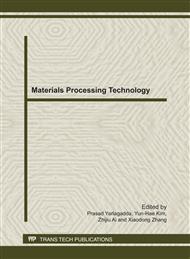p.46
p.50
p.54
p.59
p.63
p.70
p.77
p.81
p.87
Research on Photoelectric Properties of Nanowires Doped DSSC
Abstract:
TiO2 light anode film is one of the most important part of DSSC. But the microscopic structure of nano-Tio2 is not perfect,it exists the problem such as big or small size, excessive internal, insufficient specific surface area which dye and electronic adsorption ability is limited. The micron ball mainly constituted by nanowires is manufactured through experiments in this article,and it is doped into P25 paste in appropriate proportion. The new method that improving the efficiency of DSSC can be summarized by improving TiO2 film microstructure through analysising and contrasting in experiments.
Info:
Periodical:
Pages:
63-69
Citation:
Online since:
September 2011
Authors:
Keywords:
Price:
Сopyright:
© 2011 Trans Tech Publications Ltd. All Rights Reserved
Share:
Citation:


